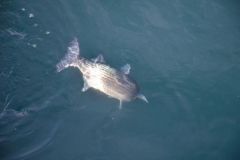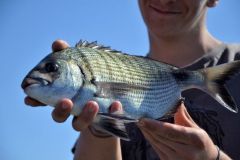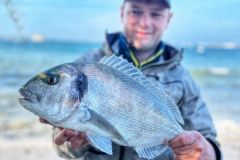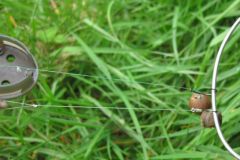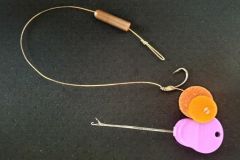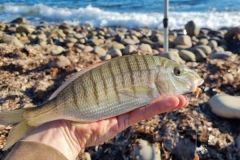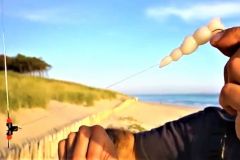Principle of the bait hook
A rig equipped with bait hooks can have one, two or even 3 stacks. Depending on its setting, it may or may not have a drag. The principle of this type of rig is to bring the yokes back against the line body, so that the rig forms a straight line with nothing sticking out. To secure the swivels against the line body, you need to fit the rig with swivels and a staple fitted with a hook on which you will bring your hooks. Once the rig has made contact with the surface of the water, the sinkers will detach as on a conventional rig.
What's the point here? It's during the throw that this set-up makes the difference!
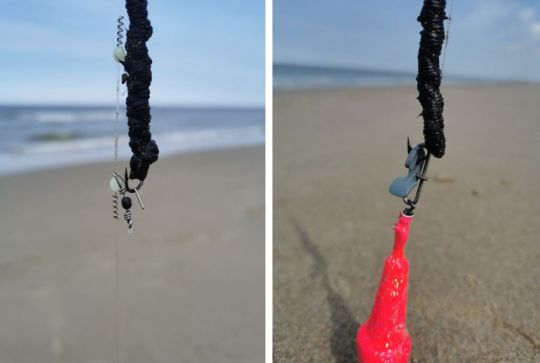
A gain in distance
Nothing sticks out from a leader with bait hooks, so it's more aerodynamic. When you cast your line, the sinkers stay together until the leader reaches its landing point. Without a bait hook, the baits twirl as you cast. This is less aerodynamic, especially as the baits are a significant weight on your line. So, when the bait follows exactly the same trajectory as the sinker, it passes through the air with the same movement. As a result, the rig will be slowed down less in the air and go further.
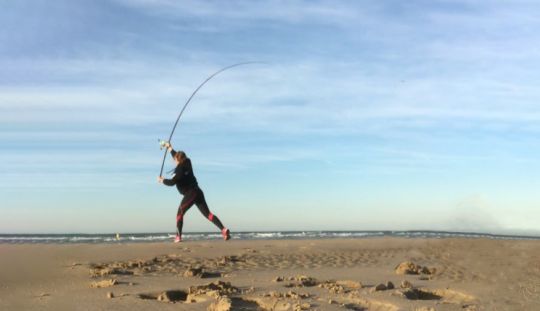
Bait preservation
The other advantage of the bait-hook rig is bait preservation. By being attached to the line body, the baits are not subjected to the power of the cast or the scattered movements around the line body when the rig is in the air. Similarly, on impact with the surface of the water, the sinkers and therefore the baits are still in the path of the lead, so the baits are less damaged by the impact. When the hooks free themselves from the hooks once in the water, the baits are still in good quality, they are not torn off and present themselves well to the fish.
How to build a bait hook?
Today, there are several methods and accessories available to help you create your own bait hook rig. I'm going to show you my typical leader for fishing the English Channel. In the diagram below, you'll see that in addition to the usual tackle, you'll need two rolling bait hooks and an IMP lead hook.
I advise you to mount a sinker on your leader when you set it up so that you can keep it taut when adjusting. Next, you'll need to hook the bottom stack first and adjust the length and height of the other two in line with the bottom stack. If you don't, your bait hook system won't work: either the baits are too loose and will detach too soon from the line body, or the baits are too taut and won't detach from the leader at all, even once in the water. Fishing with a baitcatching leader doesn't automatically mean you have to give up trawling.
For the bottom stack to turn into a trainard once detached, you simply need to fix your stop just above the lead.


 /
/ 



